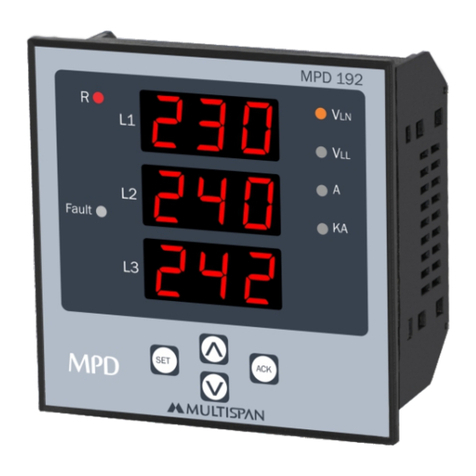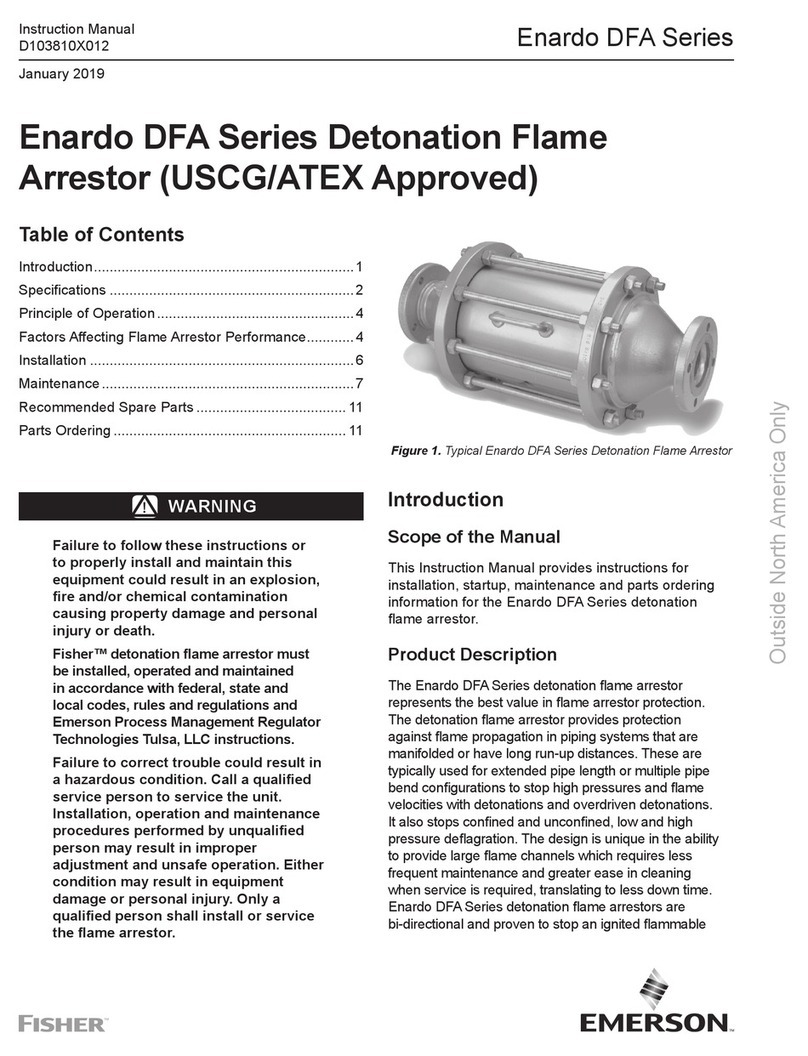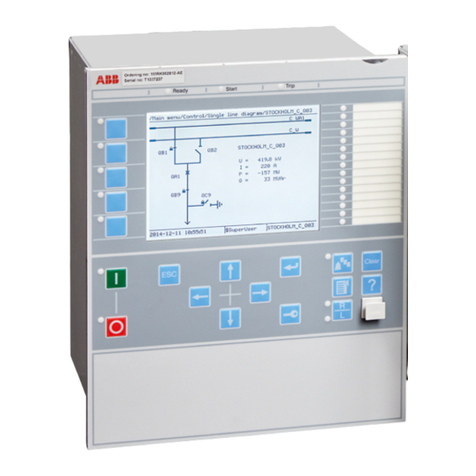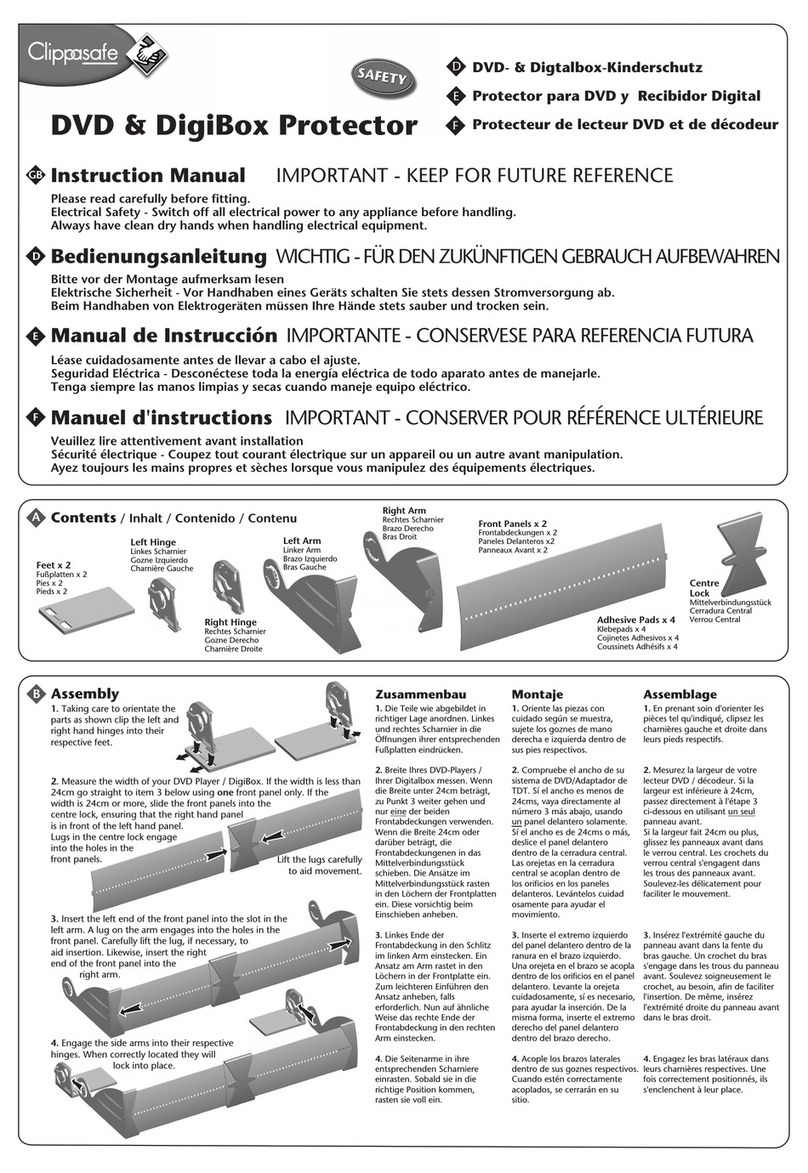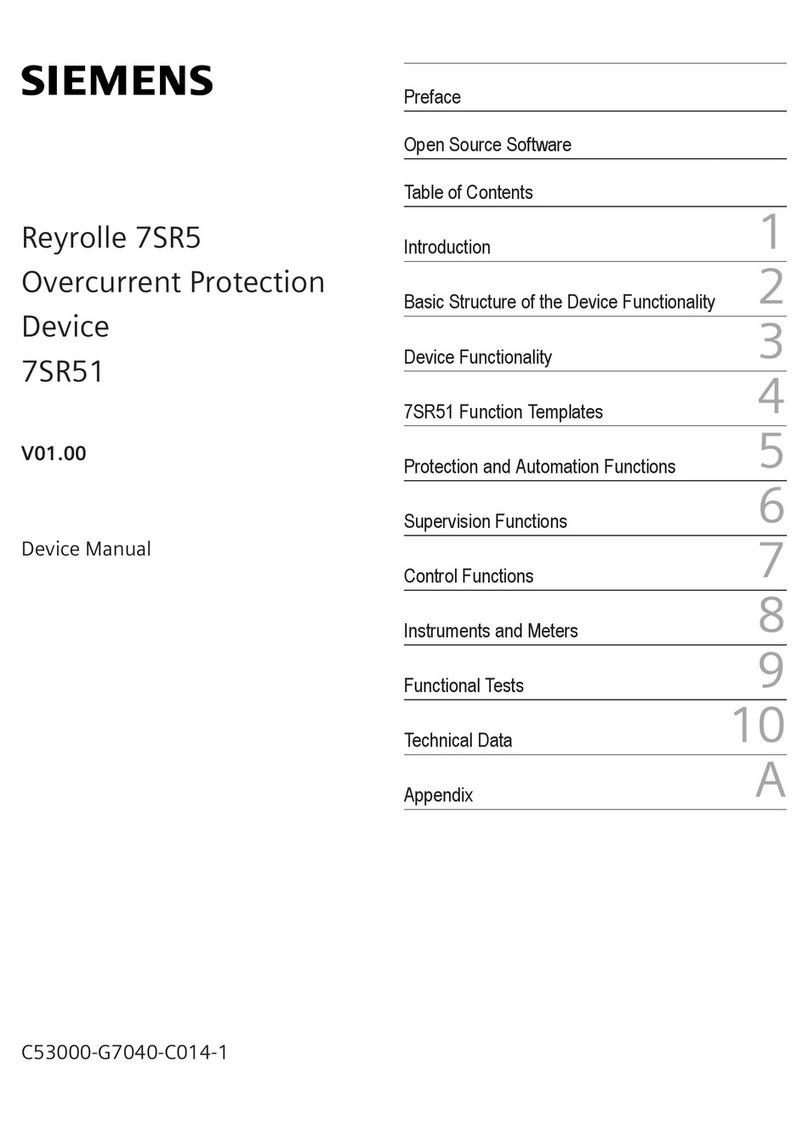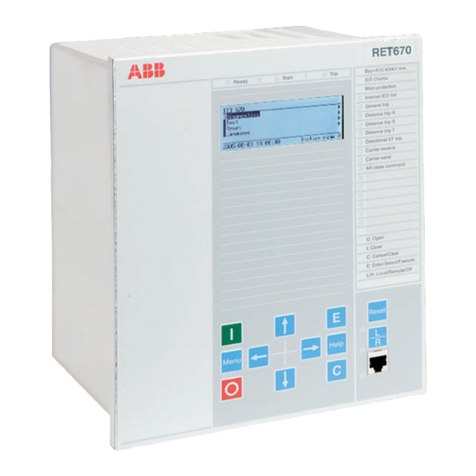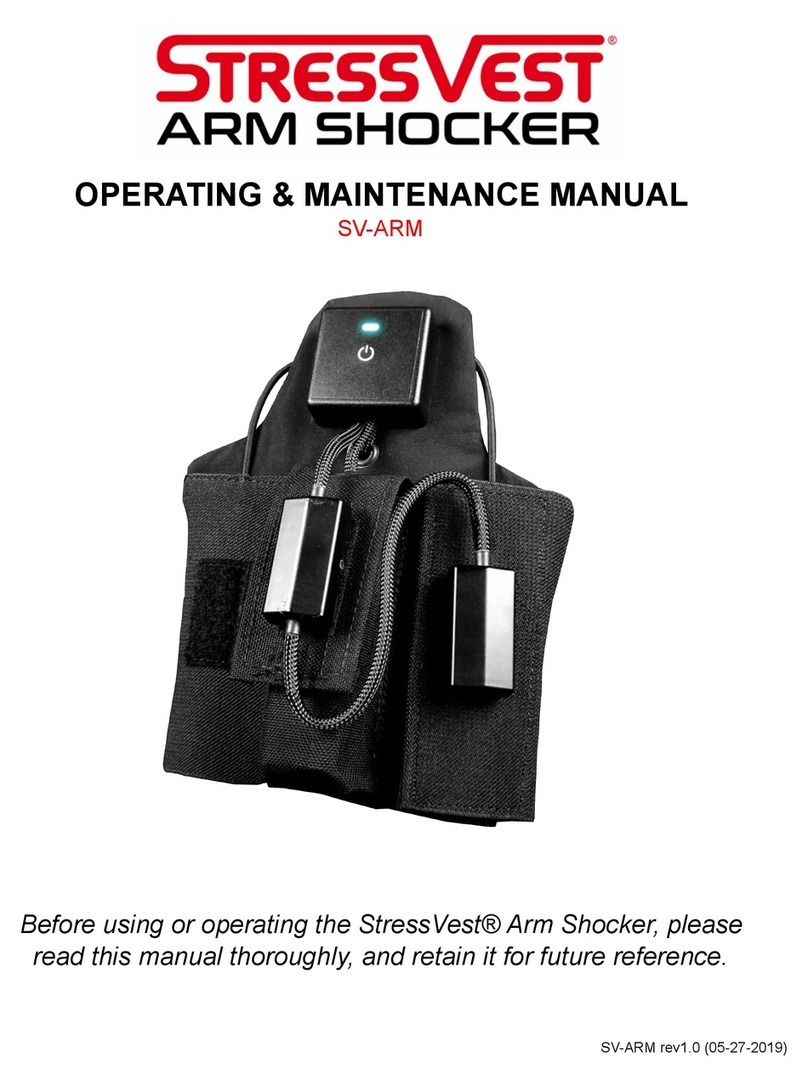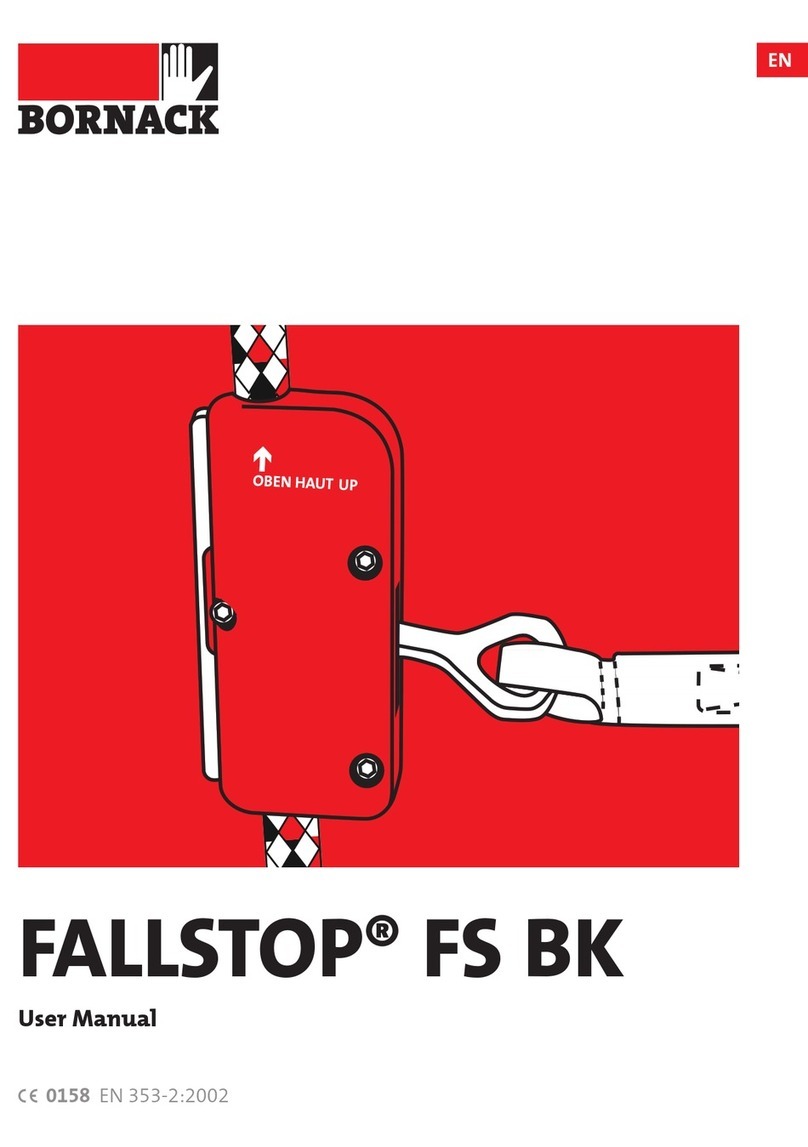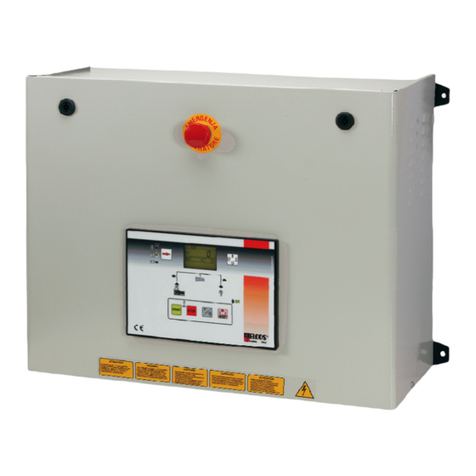Trinity Highway QuadGuard II User manual


QuadGuard
®
is a registered trademark of Energy Absorption Systems, Inc.
Part No. 611298
© 2019 Trinity Highway Products, LLC
TrinityHighway.com
1 Revision H November 2019
QuadGuard
®
II
The QuadGuard
®
II has been tested pursuant to National Cooperative Highway Research Program
(“NCHRP Report 350”) specifications. The QuadGuard
®
II has been deemed eligible for federal-aid
reimbursement on the National Highway System by the Federal Highway Administration (“FHWA”).
Product Description Manual
2525 N. Stemmons Freeway
Dallas, Texas 75207
Warning:
The local highway authority, distributors, owners, contractors,
lessors, and lessees are responsible for the assembly, maintenance, and
repair of the
QuadGuard
®
II
. Failure to fulfill these RESPONSIBILITIES with
respect to the assembly, maintenance, and repair of the
QuadGuard
®
II
could
result in serious injury or death.
The instructions contained in this manual supersede all previous information and manuals. All
information, illustrations, and specifications in this manual are based on the latest QuadGuard
®
II
information available to Trinity Highway at the time of printing. We reserve the right to make
changes at any time. Please contact Trinity Highway to confirm that you are referring to the most
current instructions.

TrinityHighway.com 2 Revision H November 2019
Table of Contents
Customer Service Contacts..........................................................................................................3
Limitations and Warnings..............................................................................................................3
System Overview..........................................................................................................................4
Measuring the Width...............................................................................................................5
Trinity Highway Approved Adhesive Anchoring System...............................................................6
Site Conditions........................................................................................................................6
Transitioning ...............................................................................................................................10
Transition Panel Types...............................................................................................................11
QuadGuard®II CZ Deployment Criteria......................................................................................12
Foundation/Anchoring.................................................................................................................13
QuadGuard®II w/Tension Strut Backup................................................................................14
QuadGuard®II w/Tension Strut Backup Wide ......................................................................15
QuadGuard®II w/Concrete Backup ......................................................................................16
QuadGuard®II w/Concrete Backup Wide .............................................................................17
QuadGuard®II Construction Zone System ...........................................................................18
8” Concrete Pad for Tension Strut Backup ...........................................................................19
Optional 8” Concrete Pad Without Rebar for Tension Strut Backup.....................................21
Backup Assembly, Tension Strut, QG...................................................................................22
Concrete Backup, QG on Grade...........................................................................................23
Concrete B-up, QG on Existing Concrete Structure..............................................................24
Concrete Pad, for Concrete Backup, QG..............................................................................25
Backup Assembly, Concrete, QG .........................................................................................26
Concrete Pad, CZ, QG..........................................................................................................27
CZ Anchor/Lifting Kit, QG, (3-9 Bays)...................................................................................28
Monorail Assembly................................................................................................................30
Diaphragm Assembly, QB.....................................................................................................33
Shim Kit, Diaphragm, Rail Guide, QG II................................................................................34
Fender Panel Assembly, QG ................................................................................................35
Nose Assembly, QG II, Narrow.............................................................................................36
Nose Assembly, QG II, 48.....................................................................................................37
Backup Assembly, TS, QG Wide..........................................................................................38
Backup Assembly, Concrete, QG Wide................................................................................39
Concrete Pad & Backup, QG Wide.......................................................................................40
(69”) Concrete Pad & Backup, QG Wide on Grade ..............................................................41
Diaphragm Assembly, QG, Wide..........................................................................................43
Wide System Fender Panel Assembly..................................................................................45
Nose Assembly, QG II, Wide ................................................................................................46
PCMB Anchor Assembly.......................................................................................................47
End Shoe Assembly..............................................................................................................48
4” Offset Transition Assembly...............................................................................................49
Quad-Beam to W-Beam Transition Assembly ......................................................................50
Quad-Beam to Thrie-Beam Transition Assembly..................................................................51

TrinityHighway.com 3 Revision H November 2019
Customer Service Contacts
Trinity Highway is committed to the highest level of customer service. Feedback regarding the
QuadGuard®II, its assembly procedures, supporting documentation, and performance is always
welcome. Additional information can be obtained from the contact information below:
Trinity Highway
Telephone (888) 323-6374 (USA)
+1 312 467 6750 (International)
E-mail TrinityHighway.com/Contact
Website TrinityHighway.com
Limitations and Warnings
Trinity Highway contracts with FHWA approved testing facilities to perform crash tests, evaluate
test results, and submit results to the FHWA for review.
The QuadGuard®II has been deemed eligible for reimbursement by FHWA as meeting the
requirements and guidelines of NCHRP Report 350. NCHRP Report 350 tests are designed to
evaluate product performance involving a range of vehicles on roadways, from lightweight cars
(approx. 1800 lb. [820 kg]) to full size pickup trucks (approx. 4400 lb. [2000 kg]). A product can
be certified for multiple Test Levels. The QuadGuard®II is certified to the Test Level(s) as shown
below:
Test Level 2: 43 mph [70 km/h]]
Test Level 3: 62 mph [100 km/h]
These FHWA directed tests are not intended to represent the performance of systems
when impacted by every vehicle type or every impact condition existing on the roadway.
This system is tested only to the test matrix criteria of NCHRP Report 350 as approved by
FHWA.
Trinity Highway expressly disclaims any warranty or liability for injury or damage to persons or
property resulting from any impact, collision or harmful contact with products, other vehicles, or
nearby hazards or objects by any vehicle, object or person, whether or not the products were
assembled in consultation with Trinity Highway or by third parties.
The QuadGuard®II is intended to be assembled, delineated, and maintained within specific state
and federal guidelines. It is important for the highway authority specifying the use of a highway
product to select the most appropriate product configuration for its site specifications. The
customer should be careful to properly select, assemble, and maintain the product. Site lay out,
vehicle population type; speed, traffic direction, and visibility are important elements that require
evaluation in the selection of a highway product. For example, curbs could cause an untested
effect on an impacting vehicle.
After an impact occurs, the debris from the impact should be removed from the area immediately
and the specified highway product should be evaluated and restored to its original specified
condition or replaced as the highway authority determines as soon as possible.

TrinityHighway.com 4 Revision H November 2019
System Overview
The QuadGuard
®
II is a potentially reusable, re-directive, non-gating crash cushion for roadside
obstacles ranging in width from 24” to 126” [610 mm to 3200 mm]. It consists of energy-absorbing
cartridges surrounded by a framework of Quad-Beam
TM
Panels. The decision as to whether this
product is reusable after impact rests solely within the sound discretion of the trained engineer,
experienced in highway products, who is working at the direction of the local DOT, or appropriate
highway authority, which specified and now owns the product.
The QuadGuard
®
II utilizes two types of cartridges in a staged configuration designed to address
both lighter cars and heavier, high center-of-gravity vehicles. Its modulardesign allows the system
length to be tailored to the design speed and appropriate number of Bays for a site (p. 10).
Impact Performance
The 5 Bay QuadGuard
®
II has successfully passed the requirements outlined in NCHRP Report
350, Test Level 3 tests with both the light car and pickup at speeds of up to 62 mph [100 km/h] at
angles up to 20 degrees.
During head-on impact testing, within NCHRP Report 350 criteria, the QuadGuard
®
II is designed
to telescope rearward to absorb the energy of impact. When impacted from the side, within the
applicable NCHRP Report 350 criteria, it is designed to redirect the vehicle back toward its original
travel path and away from the roadside obstacle.
How to Determine Left/Right
To determine left from right when ordering parts, stand in front of the system facing the roadside
feature. Your left is the system’s left and your right is the system’s right.
Counting the Number of Bays
One Bay consists of one Cartridge, one Diaphragm, two Fender Panels, etc. The Nose section is
not considered a Bay, though there is a Cartridge in the Nose of each system. Note that this
means there will always be one more Cartridge in the system than the number of Bays in the
system. To determine number of Bays, count Fender Panels on one side (Figure 1).
Figure 1
System Orientation
3 - Bay System
REAR
FRONT
LEFT
RIGHT
DIAPHRAGM
FENDER PANELS
CARTRIDGE
NOSE
BAY
BAY
BAY

TrinityHighway.com 5 Revision H November 2019
Measuring the Width
The QuadGuard
®
II is available in seven (7) nominal widths:
24” [610 mm]
30” [760 mm]
36” [915 mm]
48” [1219 mm]
69” [1755 mm] - (Minimum 3 Bays Required)
90” [2285 mm] - (Minimum 3 Bays Required)
126” [3200 mm] - (Minimum 6 Bays Required)
The nominal width of a parallel system is the width of the diaphragm (Figure 2).
The nominal width of a wide system is the width at the location shown in Figure 3.
The outside width of the system is approximately 6” [150 mm] to 9” [230 mm] wider than the
nominal width. The width of the system is not the same as the width of the Backup.
Figure 2
Width of Narrow system
Figure 3
Width of Wide system

TrinityHighway.com 6 Revision H November 2019
Trinity Highway Approved Adhesive Anchoring System
A Trinity Highway approved adhesive anchoring system is required to securely anchor crash
cushions. Each approved adhesive kit contains adhesive, studs, nuts, washers and instructions.
Both vertical and horizontal assemblies are possible using an approved adhesive anchoring
system.
Site Conditions
Cross-slope exists – If there is a cross-slope of
more than 8% (5 degrees), or if the cross-slope
varies (twists) more than 2% (1 degree) over the
length of the system, a concrete leveling pad
may be required (Figure 4).
No cross-slope – No additional action is
required.
1) Specify Backup Structure
The two Backup designs available are the Tension Strut Backup and the Concrete Backup.
Both types are appropriate for use on grade or deck.
2) Special Conditions
Contact Trinity Highway Customer Service Department if you would like input with your
application. You will need to answer the following questions:
1. Are curbs, islands or elevated objects (delineators or signs) present at the site?
What height and width are they? All curbs and elevated objects over 4” [100 mm] high
should be removed. If possible, curbs taller than 4” [100 mm] high should be removed
approximately 50’ [15 m] in front of the QuadGuard
®
II and as far back as the system’s
Backup. Any curbs that must remain should be 4” [100 mm] maximum and be mountable.
2. What is the angle of divergence if the construction site is a gore area?
What is the general geometry of the site, including the roadway for at least 500’ [150 m] in
front, so traffic patterns can be visualized?
3. Is there an existing barrier? Where there is an existing guardrail or median barrier at the
site, the Backup of the QuadGuard
®
II should tie into it when possible.
4. Will there be traffic approaching from the rear of the system? Is the system in a two-
way traffic situation, with traffic going in opposite directions on either side of the system?
Or, is the system on the side of the road in a location where crossover traffic is a concern?
If so, a Transition from the back of the system to the hazard isnecessary to prevent vehicle
interaction (pp. 12 & 13).
5. Are there any other unique features at the site that may affect positioning or
performance of the QuadGuard
®
II?
Figure 4
Cross-Slope

TrinityHighway.com 7 Revision H November 2019
3) Other Factors that May Affect Your Deployment:
1. The existence of drain inlets.
2. Junction boxes or other appurtenances located near the hazard.
3. Insufficient space for the length preferred.
4. The location and movement of expansion joints.
If these or any other special site conditions exist, please contact Trinity Highway Customer
Service Department before proceeding with your design (p. 3).
Important:
It is the responsibility of the appropriate highway authority to select
the location for the QuadGuard II in accordance with the Roadside Design Guide.
Trinity Highway is not responsible for choosing the location where a system will be
placed.
Impact conditions which differ from those described in the NCHRP Report 350 test matrix for
non-gating, redirecting crash cushions may result in different crash results than those
encountered in testing.
Furthermore, impacts in excess of TL-3 impact severity, or the existence (at the site of
assembly) of curbs or cross-slopes in excess of 8%, may yield performance which does not
meet NCHRP Report 350 evaluation criteria relative to structural adequacy, occupant risk and
vehicle trajectory factors.
Figure 5
Model Number Key

TrinityHighway.com 8 Revision H November 2019
These following charts represent the modified versions of the QG II length relative to impact
speed, which is based on the capacity of the system using a 2000 kg [4400 lb.] pickup truck.
Speed & Cartridge Placement Chart For Narrow Systems
# of Bays Model # kph [mph] Type I Type II
1* QG 240_ _ 40 [25] 2 0
2 QG 270_ _ 70 [44] 2 1
3* QG 280_ _ 80 [50] 2 2
4* QG 290_ _ 90 [56] 3 2
5 QG 2100_ _ 100 [62] 3 3
6* QG 2105_ _ 105 [65] 4 3
7* QG 2110_ _ 110 [68] 4 4
8* QG 2115_ _ 115 [71] 4 5
9* QG 2120_ _ 120 [75] 4 6
Speed & Cartridge Placement Chart For Wide Systems
# of Bays Model # kph [mph] Type I Type II
3* QG 270_ _ 70 [44] 2 2
4* QG 280_ _ 80 [50] 3 2
5* QG 2100_ _ 100 [62] 3 3
6* QG 2105_ _ 105 [65] 4 3
7* QG 2110_ _ 110 [68] 4 4
8* QG 2115_ _ 115 [71] 4 5
9* QG 2120_ _ 120 [75] 4 6
*System capacity estimated through calculation.

TrinityHighway.com 9 Revision H November 2019
Figure 6
Plan & Elevation
5 - Bay system with Tension Strut Backup
3200 [126”] MODEL NO. QG2100126 (Min. 6 Bays required)
2285 MM [90”] MODEL NO. QG210090
QUADGUARD®II
FOR WIDE HAZARDS
QUADGUARD®II
FOR NARROW HAZARDS
1755 mm [69”] MODEL NO. QG210069
610 mm [24”] MODEL NO. QG210024
760 mm [30”] MODEL NO. QG210030
915 mm [36”] MODEL NO. QG210036
1219 mm [48”] MODEL NO. QG210048
5.83 m [19’-1”]
8.73 M [22’-1”]

TrinityHighway.com 10 Revision H November 2019
Transitioning
Quad-Beam™ End Shoe
Transition Panel
The Quad-Beam™ End Shoe Panel transitions the QuadGuard
®
II system to vertical faced
concrete structures whether it is a concrete Backup or concrete barrier wall (p. 13). An Extended
End Shoe is also available. In cases where the corners of the hazard are not chamfered, it may
be necessary to add wheel deflectors to the structure in order to prevent wheel interaction.
Quad-Beam
™
to Guardrail Transition Panel (W-Beam and Thrie-Beam)
The Quad-Beam™ to W-Beam and Quad-Beam™ to Thrie-Beam Transition Panels transition the
QuadGuard
®
II system to new and existing runs of standard guardrail (p. 13).
Quad-Beam™ to Safety Barrier Transition Panel
There are several options available when transitioning the QuadGuard
®
II system to safety shape
barrier depending on the shape and position of the barrier.
When transitioning to barriers with a “New Jersey” style profile, the 4" offset Transition Panel is
most commonly used (p. 13). For transitioning to barriers that are in line with the side of the
system, use transition assembly 616041B or 616044B. For transitioning a wide system to barrier
that runs parallel to the centerline of the system, transition assembly 616048B or 616049B is
used. A 9” offset Transition Panel is also available for transitioning to barriers that are in line with
the side of the system.
When transitioning the Single Slope style barriers and parapets, 6” and 8”offset Transition Panels
are available. For transitioning a wide system to barrier that runs parallel to the centerline of the
system, a 6” offset panel is available.
How do you determine the Transition Panel offset?
Transition Panel offset is determined by measuring the distance between the face of the barrier
and the top edge of the Backup Diaphragm at 32” above ground level (Figure 7). Remember,
when assembling the QuadGuard
®
II that the correct Transition Panel offset must be achieved in
order for the offset bracket to nest between the barrier and Transition Panel ensuring proper
performance of the transition.
Figure 7
Transition Panel Offset

TrinityHighway.com 11 Revision H November 2019
Transition Panel Types
If a system is placed in a location where traffic will be approaching from the rear, a Transition
Panel is necessary. Standard panel types are illustrated below and there are variations for each
panel type. The specific panel applied will depend on system and site conditions. Therefore, it is
important to send site specific data to the Trinity Highway Customer Service Department for exact
panel requirements of your application.
Figure 8
Quad-Beam
™
to Safety Barrier
(NJ shape) Transition Panel
Figure 9
Quad-Beam
™
to Thrie-Beam
Transition Panel
Figure 10
Quad-Beam
™
to W-Beam
Transition Panel
Figure 11
Quad-Beam
™
End Shoe
Transition Panel

TrinityHighway.com 12 Revision H November 2019
QuadGuard
®
II CZ Deployment Criteria
This portable compact crash cushion is for construction zones. The QuadGuard
®
II CZ is
available in the same narrow sizes as permanent systems.
The QuadGuard
®
II CZ must be properly anchored.
Important:
QuadGuard
®
II wide systems should not be anchored to asphalt.
QuadGuard
®
II CZ Plate Model Numbers and Widths
Number of Bays 610 mm [24”] 760 mm [30”] 915 mm [36”]
2 QZ27024P QZ27030P QZ27036P
5 QZ210024P QZ210030P QZ210036P
Model Number Description
Figure 12
Model Number Key

TrinityHighway.com 13 Revision H November 2019
Foundation/Anchoring
Warning: It is the responsibility of the installer that this assembly conforms with
the guidance provided by the AASHTO Roadside Design Guide, including, but not
limited to, those regarding placement on or adjacent to curbs.
Asphalt Installations
Systems with a Tension-Strut Backup may be temporarily installed in construction zones on
asphalt. Assemblies on Asphalt Concrete (“A.C.”) must provide a minimum of 76 mm [3”] layer
of asphalt over a minimum of 76 mm [3”] layer of Portland Cement Concrete (“P.C.C.”), 152
mm [6”] layer of asphalt over 152 mm [6”] layer of subbase, or 203 mm [8”] layer of asphalt with
no subbase.
Important: Only 460 mm [18”] threaded rods, utilizing Trinity Highway approved
adhesive, can be used with asphalt foundations. Contact Trinity Highway for a
complete list of approved adhesives (p. 3).
Concrete Installations
For concrete installations, the QuadGuard®II should be installed only on an existing or freshly
placed and cured concrete base (28 MPa [4000 psi] minimum). Orientation of the concrete base
and the attenuator must comply with the project plans or as otherwise determined by the resident
project engineer or appropriate highway authority.
Recommended dimension and reinforcement specifications for new concrete pads can be found
on the standard drawings.
The QuadGuard®II may be installed on any of the following foundations using the specified
anchorage:
Foundation A: Reinforced Concrete Pad or Roadway
Foundation: 150 mm [6”] minimum depth P.C.C.
Anchorage: Approved adhesivewith 180 mm [7”] studs 140 mm [5 1/2”] embedment
Foundation B: Asphalt over P.C.C.
Foundation: 76 mm [3”] minimum asphalt concrete (A.C.) over 76 mm [3”] minimum P.C.C.
Anchorage: Length of anchor required is 460 mm [18”] 420 mm [16 1/2”] embedment
Foundation C: Asphalt over Subbase
Foundation: 150 mm [6"] minimum A.C. over 150 mm [6”] minimum Compacted Subbase (C.S.)
Anchorage: Approved adhesive with 460 mm [18"] studs 420 mm [16 1/2”] embedment
Foundation D: Asphalt Only
Foundation: 200 mm [8”] minimum A.C.
Anchorage: Approved adhesive with 460 mm [18”] studs - 420 mm [16 1/2”] embedment

TrinityHighway.com 14 Revision H November 2019
QuadGuard®II w/Tension Strut Backup
QG2TSCVR-U

TrinityHighway.com 15 Revision H November 2019
QuadGuard®II w/Tension Strut Backup Wide
QF2TSCVR-U

TrinityHighway.com 16 Revision H November 2019
QuadGuard®II w/Concrete Backup
QG2CBCVR-U

TrinityHighway.com 17 Revision H November 2019
QuadGuard®II w/Concrete Backup Wide
QF2CBCVR-U

TrinityHighway.com 18 Revision H November 2019
QuadGuard®II Construction Zone System
QG2CZCVR-U

TrinityHighway.com 19 Revision H November 2019
8” Concrete Pad for Tension Strut Backup
35-40-11 - 1 of 3
Other manuals for QuadGuard II
1
This manual suits for next models
8
Table of contents
Popular Protection Device manuals by other brands

SERVOSAN
SERVOSAN KURTARAN KU-S/60VDCX-1000VA quick start guide
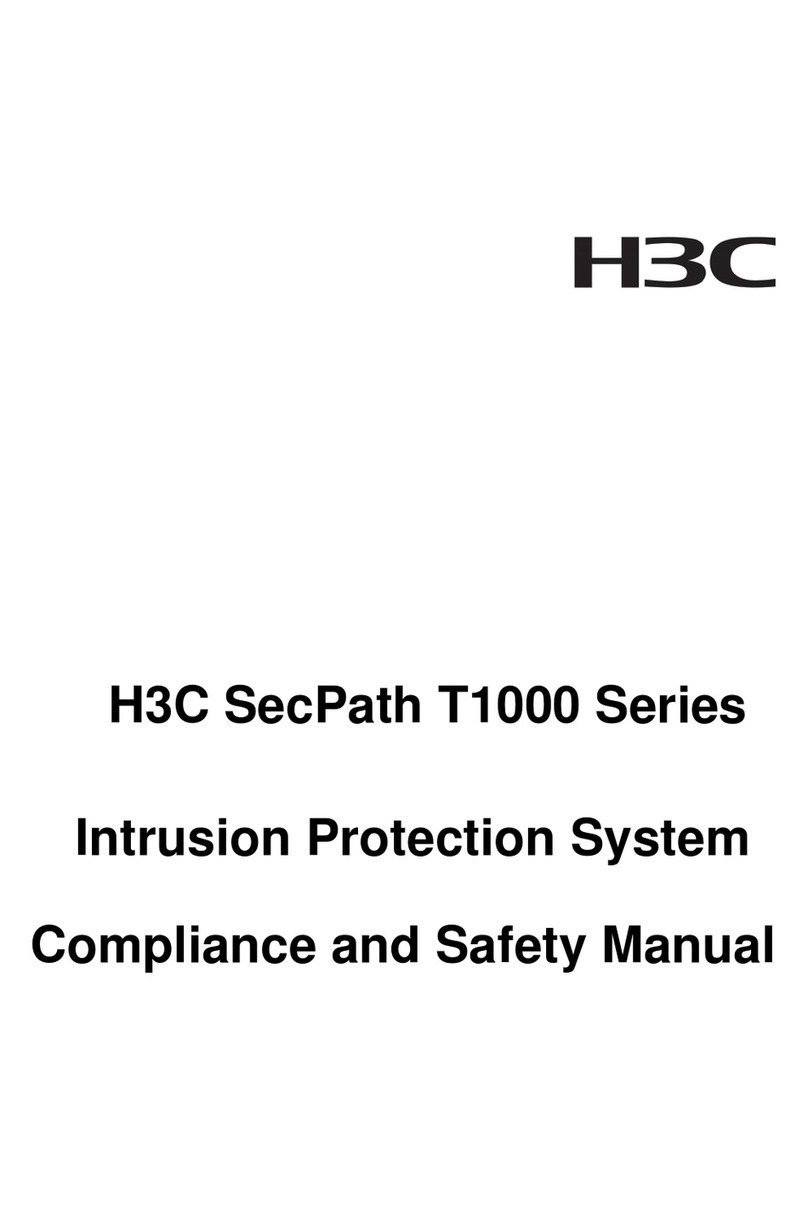
H3C
H3C SecPath T1000 Series Compliance and Safety Manual

WEG
WEG IP20 installation guide

MULTISPAN
MULTISPAN MPD-192 quick start guide
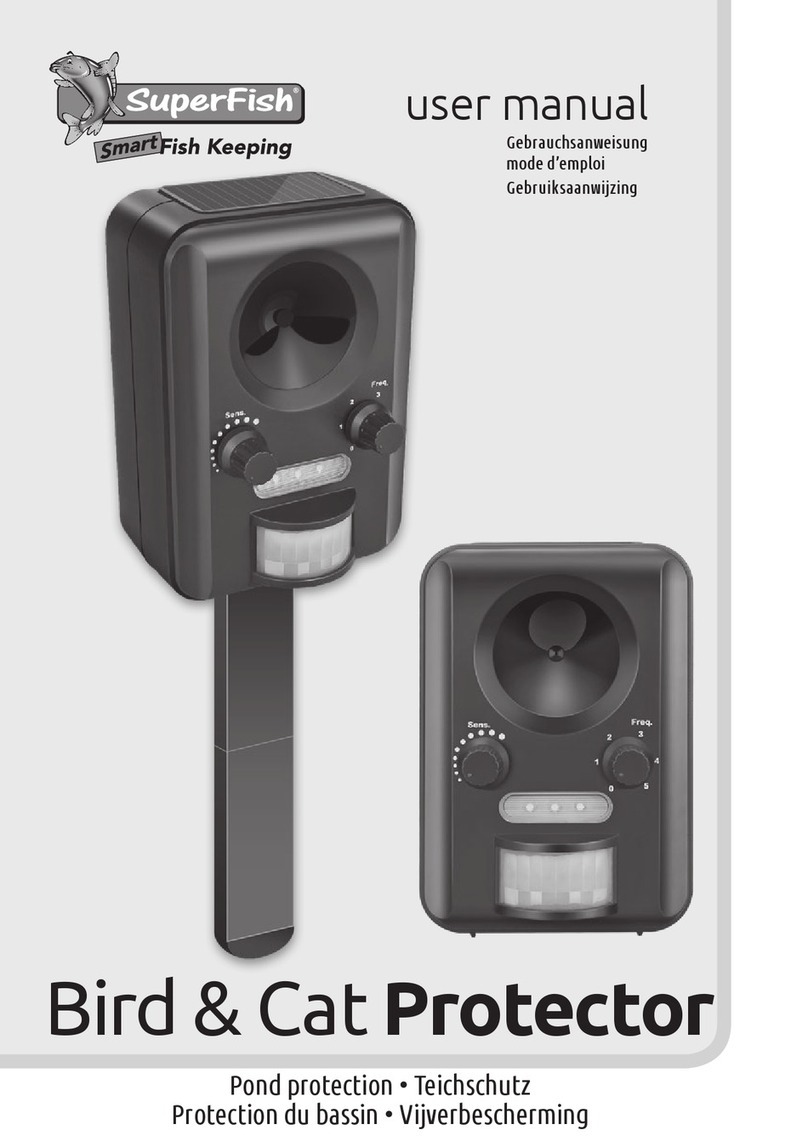
Aquadistri
Aquadistri SuperFish Bird & Cat Protector user manual
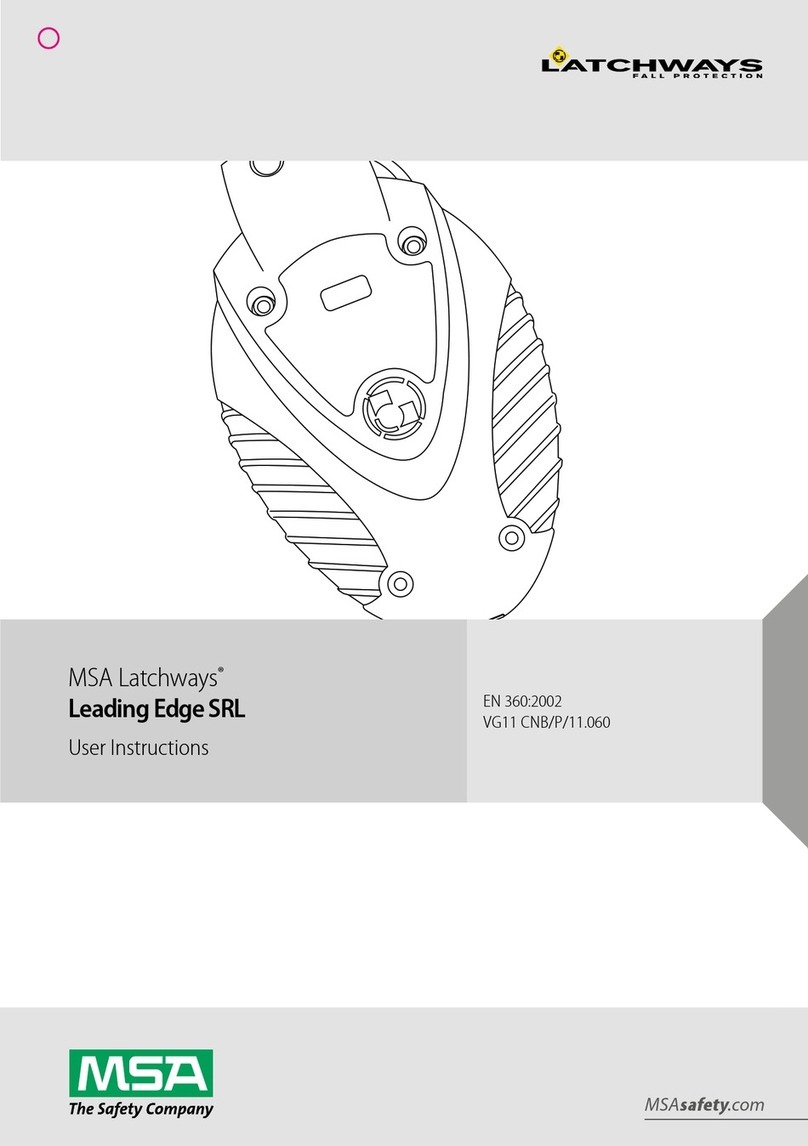
MSA
MSA Latchways Leading Edge SRL User instructions
